In addition to replacing the spark plugs at the manufacturer's recommended intervals, spark plugs should be removed, inspected and cleaned (if necessary) every 5,000 miles. The tips below can be used on all spark plugs whether they are on your motorcycle, car, boat, or event your lawn mower.
If the plugs exhibit normal wear as indicated in picture #1, you can simply clean and re-use the same plugs. If the spark plugs exhibit extreme wear or any of the wear features pictured below, the plugs should be replace and the necessary repairs adjustments should be made to the motor.
To clean the plugs simply remove all debris with a fine piece of sand paper, rinse with gasoline or engine cleaner, check the plug gap (adjust if necessary) and re-install.
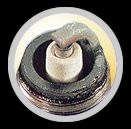 Normal Spark Plug Wear
Normal Spark Plug Wear
This plug has been running at the correct temperature in a "healthy" engine. Operating in such a desirable environment results in deposits that will be light tan or gray in color with most grades of commercial gasoline. Spark plugs demonstrating normal wear should still be changed at the manufacturers recommended intervals.
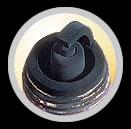
Carbon Fouled Spark Plug
Basically, soft, sooty carbon deposits, as shown , have a dry, black appearance. Often indicates bad ignition wires, an incorrect heat range spark plug or an over-rich air/fuel mixture caused by a clogged air cleaner filter element, or a faulty choke. Fuel injectors that malfunction can also lead to this condition.
Other less common causes include weak ignition system voltage or poor cylinder compression.
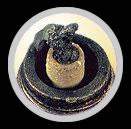
Pre-Ignition
As shown , this condition produces melting of the center electrode, and somewhat later, the ground electrode and insulator. Usually one or a combination of several engine operating conditions are the prime causes of pre-ignition. It may originate from glowing combustion chamber deposits, hot spots in the combustion chamber due to poor control of engine heat, cross-firing (electrical induction between spark plug wires), or the plug heat range is too high for the engine or its operating conditions.
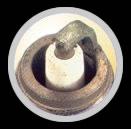
Overheated
Note the dead white or gray insulator nose which appears "blistered." Electrode gap wear rate will be considerably in excess of that normally expected. This is often caused by overadvanced ignition timing, poor engine cooling, a very lean A/F mixture, a leaking intake manifold, or the use of a spark plug too hot for the application.
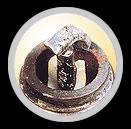
Mechanical Damage
Mechanical damage to the firing end, as shown, is caused by some foreign object in the combustion chamber or the plug nose is too long for the engine (incorrect plug selection). Since small objects can travel from one cylinder to another (because of valve overlap), the other cylinders should always be checked to prevent reoccurrence of damage.
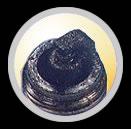
Oiled Fouled
A spark plug shorted by excessive oil entering the combustion chamber is shown. This is often caused by piston rings or cylinder walls that are badly worn. Oil may also be pulled into the chamber because of excessive clearance in the valve stem guides, or badly worn valve stem seals.
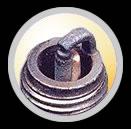
Broken/Cracked Insulator
Typically caused by improper handling of the spark plug prior to or during installation. Broken insulators can also be caused by severe detonation. Major causes include a lean air/fuel mixtures, ignition timing advanced too far, and insufficient octane rating of the gasoline.